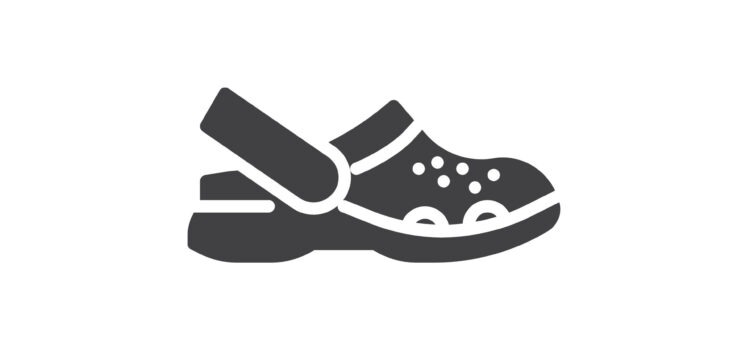Background
On 25 August 2021, Crocs Inc – the US company behind the famous foam clogs – brought proceedings in the Federal Court of Australia against Mosaic Brands Limited (Mosaic) for trade mark infringement, breaches of the Australian Consumer Law and passing off. Mosaic, previously called Noni-B Pty Ltd, is the owner of the Rivers brand and operates the website www.rivers.com.au (Rivers Website).
Crocs Inc is the registered owner of trade marks over the 3-dimensional shape of its footwear (Shape Trade Marks), as well as over the word ‘CROCS’ (Word Trade Marks). It licenses those trade marks to its wholly owned Australian subsidiary, Crocs Australia Pty Ltd (together, the Crocs Companies), which has been operating since 2005 and has its own online shop.
Since late 2003, Crocs Inc has designed, manufactured, distributed and sold a range of shoes having the unique shape depicted in its Shape Trade Marks (Classic Crocs Shape). That range of shoes – called the Classic Crocs Footwear – has been promoted, distributed and sold in Australia since 2005.
Allegations
The Crocs Companies allege that Mosaic has infringed the Shape Trade Marks by flagrantly and recklessly selling shoes that are substantially identical or deceptively similar to the Classic Crocs Shape, in both brick-and-mortar Rivers stores and on the Rivers Website. It is also alleged that Mosaic has infringed the Word Trade Marks by referring to its shoes as ‘crocs’.
The Crocs Companies also claim that Mosaic has labelled its shoes as having a ‘Classic Clog Design’, knowing that one of the products in the Classic Crocs Footwear range is called ‘Classic Clog’. As the Mosaic shoes have been allegedly advertised and offered for sale side by side with Crocs shoes on third party websites, the Crocs Companies argue that consumers are likely to be misled into thinking that the Mosaic shoes were products manufactured by Crocs Inc. For those reasons, the Crocs Companies argue that Mosaic has engaged in misleading or deceptive conduct in breach of the Australian Consumer Law, and has also committed the tort of passing off.
As a result of Mosaic’s conduct, the Crocs Companies claim they have lost profits due to reduced sales, and have suffered damage to the goodwill of their business as well as to the value of their trade marks.
Our Analysis
It is interesting to see a shape trade mark infringement case. Given the recent UGG infringement case in the US and given the Croc shape trade mark defines the shape of a shoe, it will be interesting to see if Mosaic cross-claims for invalidity of the trade marks, as shoppers may regard the shape of the shoe is descriptive of a type of shoe, rather than just a brand shape. Mosaic may set the stage for the Court to consider Crocs and its Classic Crocs Shape are now generic in Australia.
This could leave Crocs Inc’s Australian trade marks unenforceable given a brand name or brand shape can become generic through use – that is, it can become so descriptive of a type of product, that competitors should be permitted to use that term to describe their own products of the same type.
Crocs may become a victim of its own success. Its products may have become so famous that people start to associate the brand with the actual function of the product. Again, the Crocs dispute has parallels to the ‘UGG’ trade mark case where, in a multi-year legal battle, Deckers lost control of that trade mark in Australia given the word ‘UGG’ had become synonymous with a type of shoe.
The big issue of the Crocs case is likely to focus on invalidity. Even if it does not focus on invalidity, trade mark infringement still needs to be made out. The Shape Trade Marks contain endorsements as to features of the shoes, but some of those features are not present in the Mosaic shoes the subject of the dispute. Furthermore, Mosaic needs to have used the mark as a ‘sign’ to indicate a badge of origin. Crocs will need to argue that the sale or display of a product with a particular shape constitutes use of a trade mark as a sign.
Crocs Inc could have registered a Design Right to protect its Classic Crocs Shape, but a registered Design Right can only extend for 10 years, and a Design must be “new and distinctive” at its priority date. However, trade marks don’t need to be new or distinctive at the time of filing, and are renewable every 10 years. Thus, registering a shape trade mark is a way to extend registration.
Thus the filing of the Shape Trade Marks are strategic filings to give Crocs Inc ongoing protection over the shape of a product. However, protecting the Crocs mark in that manner has disadvantages as it raises possible defences, such as that the mark is not being used as a ‘sign’ to indicate a badge of origin. Alternatively, it could be argued that Crocs Inc’s trade marks are invalid on the basis that the shape or name has become descriptive.
Thus, there are two important questions to be asked. Is the shape now a signifier of a type of shoe (like a thong or flip flop)? Does the mere sale of an item constitute use of the shape of that item as a ‘sign’? We eagerly await the Court’s answer to those questions.

